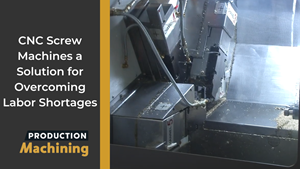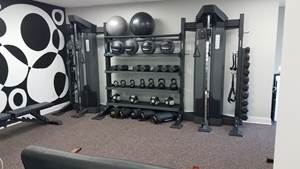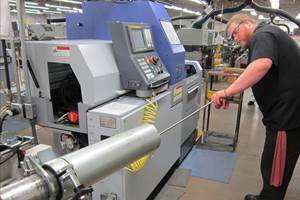Critical Skills For Effectiveness In Today's New World--Part 2 of 4
The four trends that define the differences between yesterday's and today's way of maximizing effectiveness include the following: 1) Solo to team performance; 2) Stand-alone company to link in supply chain; 3) From problem detection to process failure prevention; and 4) From managing data to empowering decision making. This month's article looks at the second of these trends.
The four trends that define the differences between yesterday’s and today’s way of maximizing effectiveness include the following: 1) Solo to team performance; 2) Stand-alone company to link in supply chain; 3) From problem detection to process failure prevention; and 4) From managing data to empowering decision making. This month’s article looks at the second of these trends.
Stand-Alone Company To Link In The Supply Chain.
Your company’s ability to perform is, of course, critical. However, today, performance alone cannot ensure your company’s profitability nor sustainability. The health of the various supply chains, of which your company is a part, is more likely the best predictor of long-term sustainability and success.
I often hear that it is more important to work on your strengths, rather than spend a lot of time on your weaknesses. But, in a world where every company is one link in a hyper-extended, global-reaching supply chain, the chain can be no stronger than its weakest links.
As the OEMs and our upper-tier customers continue to focus on their strengths, two unanticipated results appear. First, the length and complexity of the supply chain increases dramatically, making it more likely that critical information is not available where it is needed. Second, the commercial and financial successes of any of the link companies in the chain become more vulnerable to the failures, weaknesses and missteps of all other supply chain companies.
Thus, it makes sense that your efforts to ensure the success and sustainability of your business are directed externally. This means connecting the supply chain up and down—“connecting” trumps and “communicating” with only your immediate customers and suppliers.
Our customers.
“Do as I say, not as I do,” pretty well sums up the tone and attitude of the OEM community toward its supply base. Unfortunately, our business success depends on these folks and things aren’t looking so good for them these days when they can’t move product without offering employee discount gimmicks. One needs only to read any newspaper’s business section or The Wall Street Journal to see the harvest resulting from the Big 3’s continued sowing of dictates and pronouncements.
A recent presentation by Plante & Moran partner Craig M. Fitzgerald projects that up to 30 percent of auto suppliers are “6 months or less from going out of business.” This is as much attributable to the patronizing and one-way communications from the OEMs as it is to any misfeasance by the management of the supplier companies.
“Connection” means that the information and mutual understanding flow two ways. With connections—rather than pronouncements or decrees—each company can better understand the needs and wants of its trading partner.
Connection also implies equal distribution of the relationship’s benefits. The days of supplier abuse as a
competitive advantage are gone, further aggravated by an ever-shrinking pool of qualified, capable suppliers. Who exactly is connecting with your customers these days?
Our suppliers.
Connecting with our suppliers is long overdue. Perhaps the weakest link in our value chain is understanding what our suppliers can do that will reduce the overall cost to the supply chain, as opposed to achieving lowest unit price on your purchase order.
Perhaps they can provide material already processed in such a way as to reduce your time and cost to machine, or at a strength level such that a post-machining heat treatment is no longer required.
Since 2000, almost 30 North American steel companies reorganized. Just as we now realize that a business that does not return our cost of capital is not a business (it’s business suicide), so too must our suppliers recover their costs if they are to be sustainable.
Without customers, our businesses have no reason to exist. Without suppliers, our businesses have no product. Connecting with our suppliers to see what they can do that will save us all the most money might be the best solution for strengthening the chain and improving the chances for our businesses to be successful, profitable and sustainable.
What we can do.
Facilitate connections between our organizations and our suppliers and customers. Show me a job where the transaction is handled solely by fax machine or e-mails between Purchasing and Sales and I’ll show you a commodity job soon to be produced overseas. If we are to strengthen the chain, we need to identify the weaknesses and vulnerabilities of our entire process chain and cooperatively address them.
The auto industry’s failed fixation on demanding price decreases hasn’t done anything except lower Detroit’s bond ratings and put a large portion of its supply base on credit watch. Let’s use our unique spot in the chain to determine what changes can be made to optimize reward and minimize risk for all parties in our products. There is no one in a better position to do this than us, and there is no better time than right now.
Next issue: Part 3 — From Problem Detection To Process Failure Prevention.
Related Content
Strengthening Manufacturing Workplaces Through Active Listening
A good strategy to weather the storms of manufacturing market upheavals and unpredictable factors is to commit to continuous, active employee listening.
Read MoreVideo Tech Brief: CNC Screw Machines a Solution for Overcoming Labor Shortages
CNC screw machines can exceed job shop productivity and enable manufacturers to overcome perpetual employment gaps.
Read MoreApplying a Healthy Approach to Employee Investment
Service Center Metals’ on-site health center offers its employees and their families free same-day health care and, in return, the employer is gaining many benefits including a healthier workforce and attracting potential employees.
Read More6 Tips for Training on a Swiss-Type Lathe
There are nuances to training a person to effectively operate a Swiss-type lathe. A shop I visited a while back offers some suggestions.
Read MoreRead Next
A Tooling Workshop Worth a Visit
Marubeni Citizen-Cincom’s tooling and accessory workshop offers a chance to learn more about ancillary devices that can boost machining efficiency and capability.
Read MoreDo You Have Single Points of Failure?
Plans need to be in place before a catastrophic event occurs.
Read More5 Aspects of PMTS I Appreciate
The three-day edition of the 2025 Precision Machining Technology Show kicks off at the start of April. I’ll be there, and here are some reasons why.
Read More













.jpg;maxWidth=300;quality=90)







